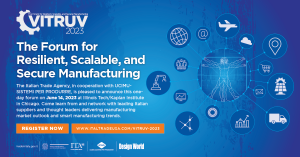THIS INTERNATIONAL ON DEMAND SUMMIT IS AN INDUSTRY… More
State of the Industry Report: Analysis of the ceramic machinery sector’s 2016 financial statements reveals an outstanding performance on the part of the industry-leading companies
Analysing the 2016 financial statements for the ceramic and brick machinery sector, the ACIMAC Research Department used statistical methods to identify the group of top-performing companies. This cluster contains 28 companies (three-quarters of which are based in Italy) consisting prevalently of tile machinery manufacturers (24) along with 3 companies specialising in brick making machinery. As expected, this cluster contains a relatively large number of companies specialising in digital decoration and finishing, although it also includes manufacturers of moulds and drying and firing equipment.
The top-performing companies grouped in this cluster display very high average levels of gross and net productivity (ROI and ROS 14%, EBITDA 15% of turnover, net profits almost 14%). While value added margin is slightly higher than the industry average, the outstanding factor in terms of technological and manufacturing efficiency is that of streamlined inventory management, as evidenced by a very high rate of inventory turnover (11.3 times a year). On average the 28 top-performing companies pay the highest salaries in the sector, but they also have an extremely high level of productivity per employee measured in terms of added value: greater than 105,000 euros per employee (more than 65% higher than the sector average). This results in a labour cost to turnover ratio of just 16.8%.
As regards indicators of capital and financial health, the top-performing companies have an equity ratio of almost 42%, thirteen percentage points higher than the sector’s rather low average value. This indicates a very low debt ratio and a corresponding reduction in financial vulnerability. EBIT is 45 times higher than total financial expenses. The abundance of liquidity is demonstrated by a cashflow margin that is more than twice the industry average (10% compared to the industry average of 4.6%).
Related Articles:

Recent News
POSTED ON

























